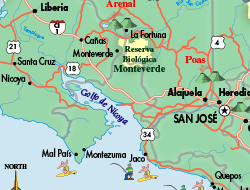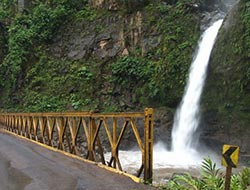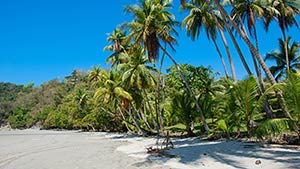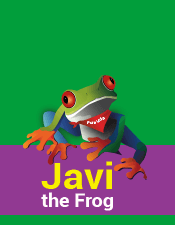Lessons from the extinction of Costa Rica's golden toad
Beautiful green forest at Monteverde Cloud Forest Reserve
One of the most famous amphibians in Costa Rica no longer exists in the country at all. The extinction of the golden toad, which once played an important role in promotion ecotourism in Central America, has inspired ongoing scientific research and conservation efforts.
Toad Dipped in Paint
The golden toad was first found in 1966, when it was discovered by famed herpetologist Jay Savage in the tropical forests of Monteverde, Costa Rica. Although they were quite small in size, measuring just two inches long at maturity, these creatures stood out from their surroundings thanks to what has been called their "Day-Glo golden orange" hue. Their color was so bright that when he first saw one, Savage thought that the golden toad resembled a different toad dipped in enamel paint. This brilliant coloration made the species a great ambassador for Costa Rica, and the toad was frequently featured in promotional materials touting the country's rich biodiversity.
Declared Extinct
Over the course of the two decades following their discovery, golden toads thrived in a 12-square-mile region near Monteverde. As late as the summer of 1987, ecologists recording sightings of more than 1,500 adult toads in a three-month span. Within two years, however, the species completely disappeared, and no living specimen has been seen since May 15, 1989. After years of searching, the International Union for Conservation of Nature declared the golden toad extinct.
Possible Reasons
The extinction of the golden toad has sparked a great deal of scientific debate and inquiry, as the animal's sudden disappearance is seen as the beginning of a trend of similar declines among populations of other amphibians. Scientists have proposed a number of possible reasons for the loss of the golden toad, including global warming, fungal infection, airborne pollution and dry conditions caused by El Niño. This species' extinction has proved to be a valuable case study for those studying other frogs and toads threatened by decline, giving the scientific world important insight into the ecology behind changes in amphibian populations.
Breeding Programs
This information has helped many conservationists launch new efforts to protect the world's remaining frog and toad species from extinction. Zoos around the world have launched captive breeding programs to help safeguard animals from rapid fluctuations in natural conditions, giving them a chance to survive some of the same threats that may have killed the golden toad.
7 Days / 6 Nights
Starting at $978 per person
10 Days / 9 Nights
Starting at $1,440 per person











.jpg)


.jpg)



